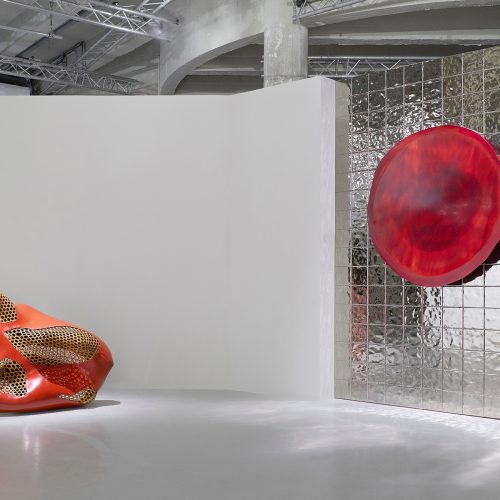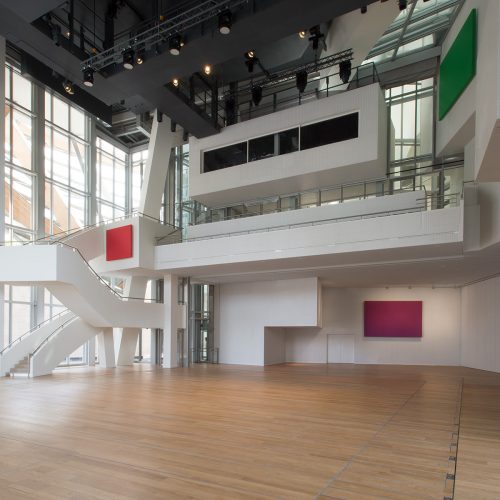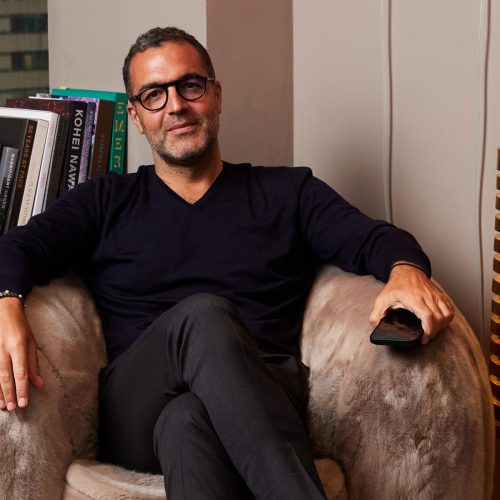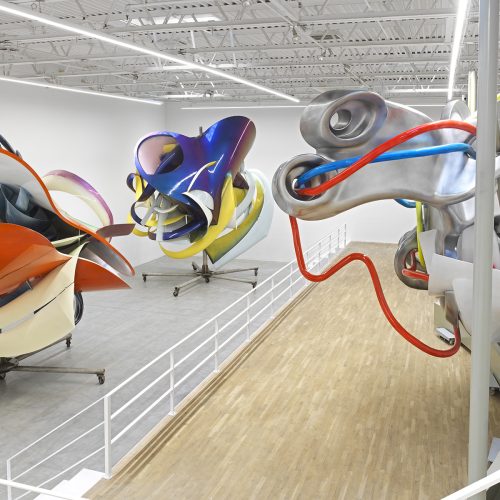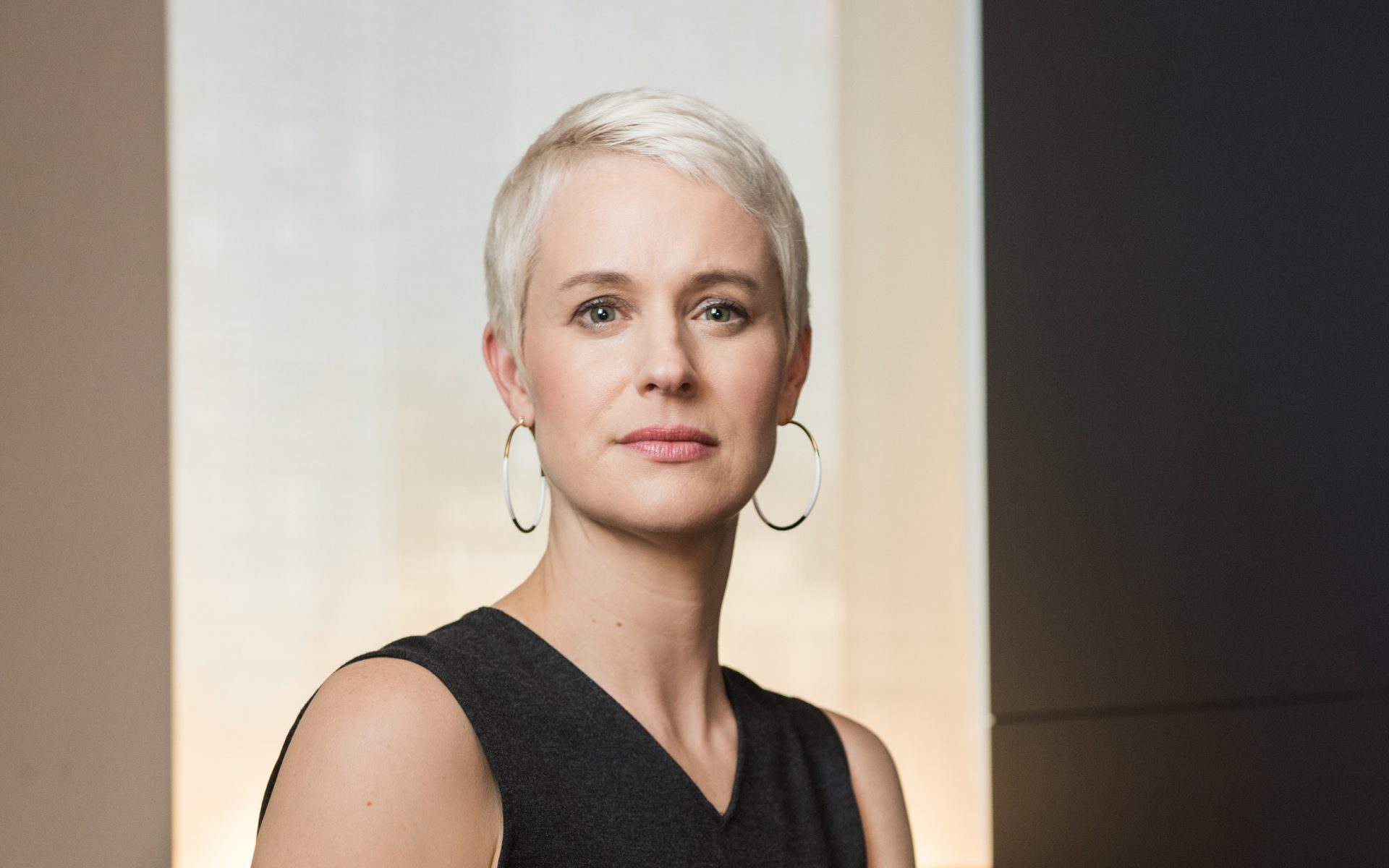

Armory Show Director Nicole Berry Looks Back on 25 Years of the Fair
The show’s executive director speaks with Galerie about the 2019 edition of New York’s signature fair
This year, New York’s signature fair for modern and contemporary art the Armory Show, which opens to the public today, turns 25. In addition to its 200 exhibitor booths and sections, including Focus, Platform, and Presents, this year the fair stages a special section paying tribute to gallerists Pat Hearn and Colin de Land (of Pat Hearn Gallery and American Fine Art, respectively), who, along with Paul Morris and Matthew Marks, founded the fair in 1994. Copresented with Galerie Nagel Draxler, the section features works by Mark Dion, Andrea Fraser, and Renée Green and is intended to give fairgoers context as well as demonstrate the great influence that Hearn and De Land had on the international art scene.
A major section of the fair, Focus is one of the more lively and vibrant areas this year. Curated by Lauren Haynes, curator of Contemporary Art at the Crystal Bridges Museum of American Art, it’s devoted to solo and dual presentations, and this year features artists who work in figuration, including many painters. The Platform section, which is devoted to eight large-scale installations situated around the fair, is curated by Sally Tallant, director of the Liverpool Biennial. Another highlight is Leo Villareal’s installation Star Ceiling (2019), a mesmerizing, 75-foot-long celestial light-scape along a covered walkway connecting Pier 94 to Pier 92.
Here, Galerie interviews Nicole Berry, the fair’s executive director, about her thoughts on the fair turning 25. Enjoy.
What’s been the most exciting thing about the Armory Show’s 25th anniversary?
Everything’s cyclical, and I think that it’s been very interesting to do research for our 25th anniversary. Looking back to the roots of the fair, we started as an antiestablishment fair for galleries who weren’t participating in the main fairs, Basel and Cologne, and provided an alternative for them. Looking back at why the fair was started—it was started by dealers to celebrate art that wasn’t being shown elsewhere.
How has the Armory Show changed and developed over its first 25 years?
I think we’ve established ourselves after 25 years to be a fair that you want to be a part of. The brand is very well known, it’s a New York–driven fair—started by New Yorkers. It really highlights all that new York has to offer. Then it morphed from the Gramercy International to the Armory Show and moved to the home of the original 1913 Armory Show. It was really starting to establish itself as it got bigger and moved to different venues as a model that was becoming more serious, more established, less grassrootsy, less hotel-fair-like.
The fair launched in 1994 as a hotel fair at the Gramercy Park Hotel. The Armory Show today is much bigger and more international. How are you paying tribute to that original fair?
Looking back, we were trying to find a way to celebrate the 25th anniversary and there was that disconnect. It was created in a way that is very different from the fair today. Our goal was to find a way to pay tribute to the spirit of why the fair was started as we look forward to the future. We wanted the 25th anniversary to be meaningful. There’s a section that’s a tribute to Pat Hearn and Colin de Land. We were in a conversation with Bard and I went up to see that show [“Conditions of Being Art: Pat Hearn Gallery and American Fine Art, Co. (1983–2004)”]. I don’t think it was until I went there and saw the depth and scope of that show that I realized the contribution—not that Paul Morris and Matthew Marks weren’t equally important to the overall art community and the history of New York art—but Pat and Colin had such a tremendous impact on the New York art scene and on art history in general. So we thought it was important to pay tribute to them in a respectful manner, and we spoke with a lot of their peers about how to do that. It’s a multipart 25th anniversary. It has different components.
Recommended: Galerie’s Ultimate Guide to Armory Week
What are some of the features of that section?
One of the components is a booth that has a Renée Green piece and an Andrea Fraser piece. Renée showed with Pat, and Andrea showed with Colin. We wanted to pick some quintessential artists and artworks from that time period and galleries because they were two very separate entities even though [Hearn and De Land] were a married couple and they had different programs. The common thread is they were both supporting antiestablishment artists who were questioning everything at that time. We felt that Renée and Andrea were two artists who really reflect the beliefs and program of those two galleries. We’re working in conjunction with Christian Nagel of Galerie Nagel Draxler to present that. That’s a key component. It gives the historical context of what kind of artwork was being shown back when the fair was created.
Sally Tallant has taken the 1939 World’s Fair as the starting point for the section she curated, Platform. How is that a relevant subject today?
I think [Tallant’s] theme for the fair is really, obviously very relevant to what’s going on. She’s looking at the 1939 World’s Fair, when things were kind of unknown, kind of unrestful, and that’s kind of like the time we’re living in now all across the world. The art is still being created, and it’s reflecting issues but it also can be very hopeful in some way. It’s not all doom and gloom.
You have a new prize this year, the Gramercy International Prize, to support “young and pioneering” New York galleries, which went to Ramiken Gallery. Can you tell me something about the meaning of the prize?
We have five people that actually participated as dealers at the first fair (Stefano Basilico, Clarissa Dalrymple, Nicole Klagsbrun, Andrea Rosen, and Lisa Spellman) who each nominated galleries. The winner got a free booth at the fair. The idea being that that is in the spirit also of finding a platform. It’s something that will continue year after year.
I think the 25th anniversary is a great opportunity for us as we look toward the future. That was really the reason that we spent so much time looking to the past. If you don’t know where your roots are, you don’t really know how to move forward. I think that we’re excited about the next 25 years. I hope I’ll be retired for that one.

